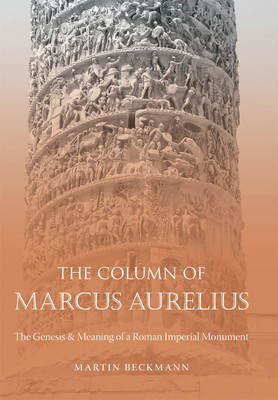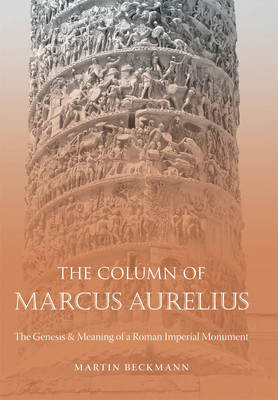
- Afhalen na 1 uur in een winkel met voorraad
- Gratis thuislevering in België vanaf € 30
- Ruim aanbod met 7 miljoen producten
- Afhalen na 1 uur in een winkel met voorraad
- Gratis thuislevering in België vanaf € 30
- Ruim aanbod met 7 miljoen producten
Zoeken
€ 121,95
+ 243 punten
Uitvoering
Omschrijving
One of the most important monuments of Imperial Rome and at the same time one of the most poorly understood, the Column of Marcus Aurelius has long stood in the shadow of the Column of Trajan. In The Column of Marcus Aurelius, Martin Beckmann makes a thorough study of the form, content, and meaning of this infrequently studied monument. Beckmann employs a new approach to the column, one that focuses on the process of its creation and construction, to uncover the cultural significance of the column to the Romans of the late second century A.D. Using clues from ancient sources and from the monument itself, this book traces the creative process step by step from the first decision to build the monument through the processes of planning and construction to the final carving of the column's relief decoration. The conclusions challenge many of the widely held assumptions about the value of the column's 700-foot-long frieze as a historical source. By reconstructing the creative process of the column's sculpture, Beckmann opens up numerous new paths of analysis not only to the Column of Marcus Aurelius but also to Roman imperial art and architecture in general.
Specificaties
Betrokkenen
- Auteur(s):
- Uitgeverij:
Inhoud
- Aantal bladzijden:
- 264
- Taal:
- Engels
- Reeks:
Eigenschappen
- Productcode (EAN):
- 9780807834619
- Verschijningsdatum:
- 27/06/2011
- Uitvoering:
- Hardcover
- Formaat:
- Ongenaaid / garenloos gebonden
- Afmetingen:
- 162 mm x 241 mm
- Gewicht:
- 521 g

Alleen bij Standaard Boekhandel
+ 243 punten op je klantenkaart van Standaard Boekhandel
Beoordelingen
We publiceren alleen reviews die voldoen aan de voorwaarden voor reviews. Bekijk onze voorwaarden voor reviews.











